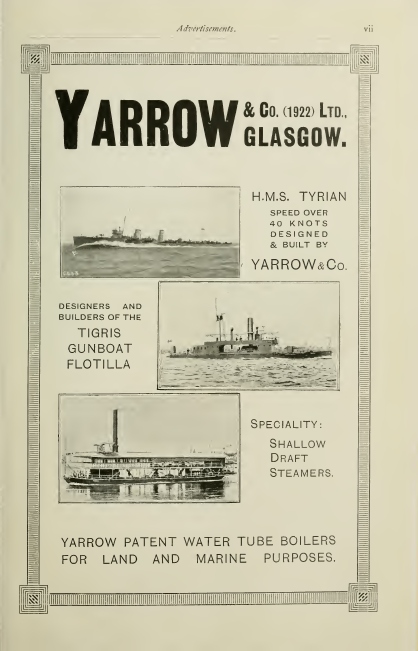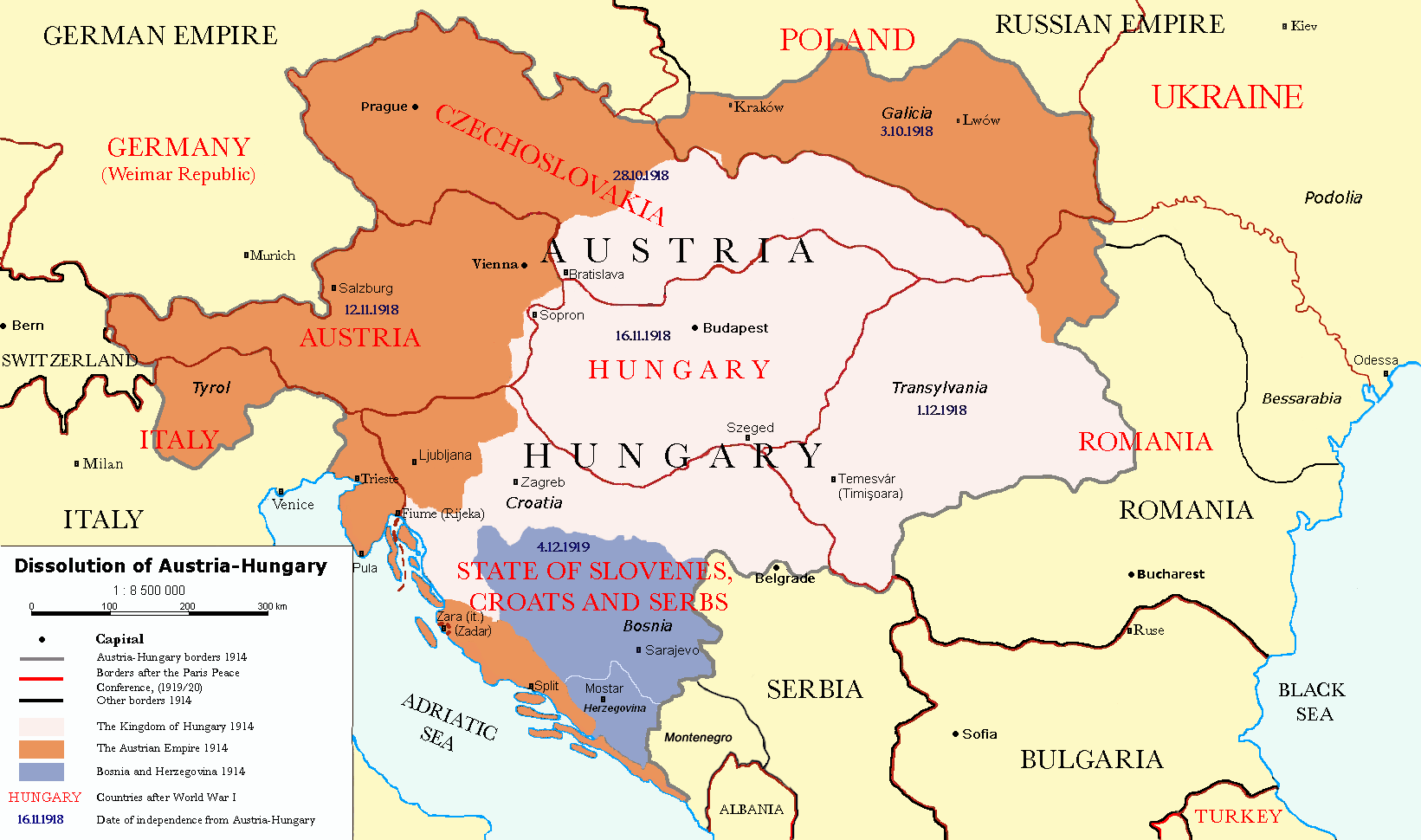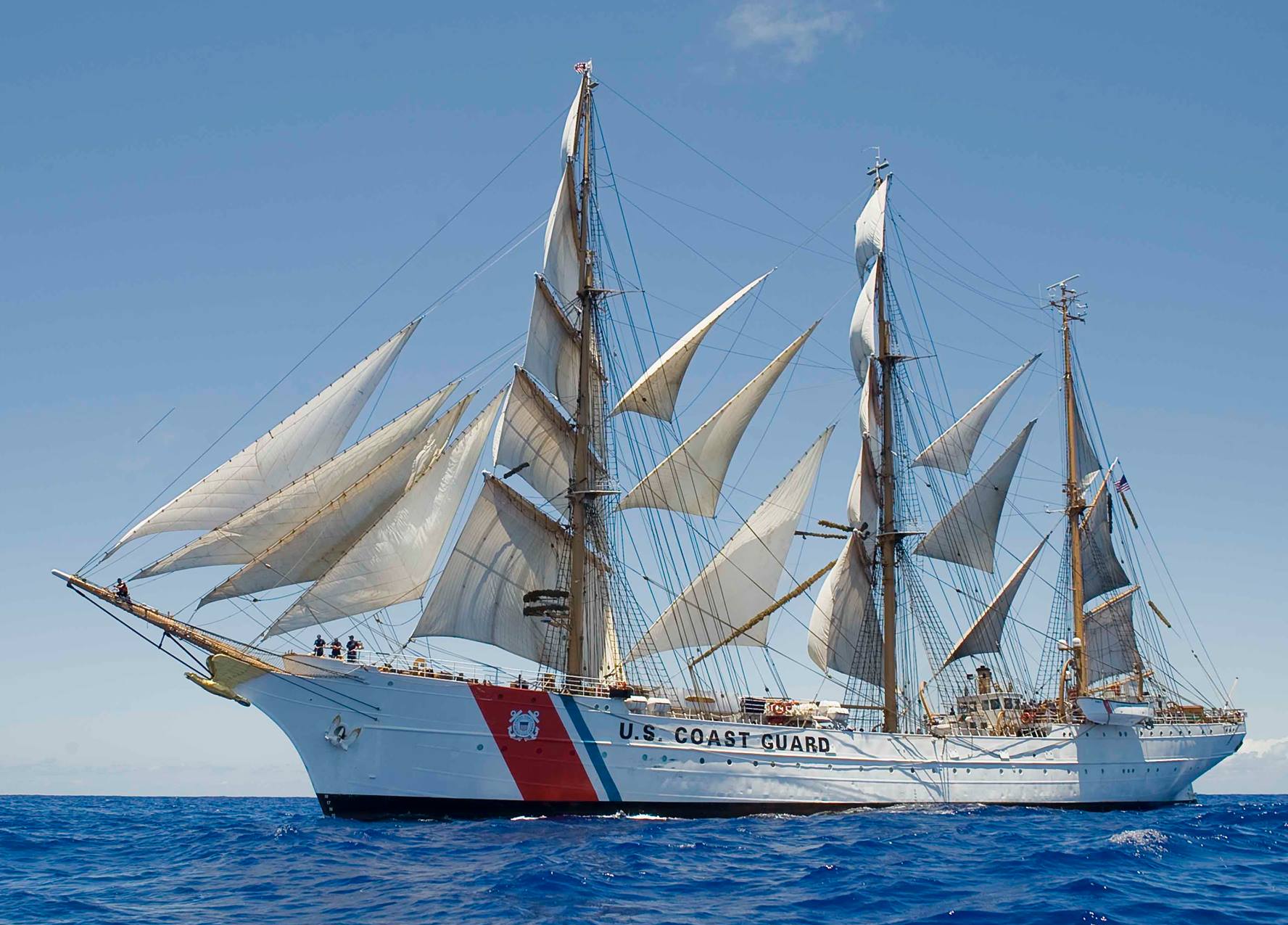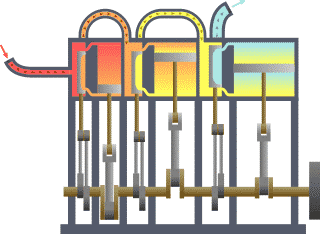|
SMS Natter (1896)
SMS ''Natter'' was a torpedo boat of the Austro-Hungarian Navy. ''Natter'' was built by the German shipbuilder Schichau-Werke between 1895 and 1896. She was renamed ''Torpedoboot 18'' (abbreviated ''Tb 18'') in 1910 and used for local coast defence during the First World War. She was scrapped in 1920. Design In 1895, the Austro-Hungarian Navy purchased one prototype torpedo boat each from the British shipbuilder Yarrow and the German shipbuilder Schichau-Werke, two specialist builders of torpedo vessels. Schichau's design was long overall and between perpendiculars, with a beam of and a draught of . Displacement was normal and full load. Two coal-fired Thornycroft-Schutz water-tube boilers fed a single three-cylinder triple expansion steam engine which drove a single propeller shaft. The machinery was rated at giving a speed of . 30 tons of coal were carried, giving an endurance of at . The ship was armed by two L/33 Skoda guns and three torpedo tubes. The ship had a ... [...More Info...] [...Related Items...] OR: [Wikipedia] [Google] [Baidu] |
Yarrow Shipbuilders
Yarrow Shipbuilders Limited (YSL), often styled as simply Yarrows, was a major shipbuilding firm based in the Scotstoun district of Glasgow on the River Clyde. It is now part of BAE Systems Surface Ships, owned by BAE Systems, which has also operated the nearby Kvaerner Govan, Govan shipyard (formerly Fairfields) since 1999. History Origins in London The company was founded by Alfred Yarrow, later Sir Alfred Yarrow, Yarrow Baronets, 1st Baronet, in the year 1865 as Yarrow & Company, Limited. Originally it was based at Folly Wall, Poplar, London, Poplar, then in 1898 as the company grew, Yarrow moved his shipyard to London Yard, Cubitt Town.History of London Yard by Angela Brown and Ron Coverson, 2001 Hundreds of steam launches, lake and river vessels, and eventually the Royal Navy's first destroyers, the , were built at Yarro ... [...More Info...] [...Related Items...] OR: [Wikipedia] [Google] [Baidu] |
Water-tube Boiler
A high pressure watertube boiler (also spelled water-tube and water tube) is a type of boiler in which water circulates in tubes heated externally by fire. Fuel is burned inside the furnace, creating hot gas which boils water in the steam-generating tubes. In smaller boilers, additional generating tubes are separate in the furnace, while larger utility boilers rely on the water-filled tubes that make up the walls of the furnace to generate steam. The heated water/steam mixture then rises into the steam drum. Here, saturated steam is drawn off the top of the drum. In some services, the steam passes through tubes in the hot gas path, (a superheater) to become superheated. Superheated steam is a dry gas and therefore is typically used to drive turbines, since water droplets can severely damage turbine blades. Saturated water at the bottom of the steam drum returns to the lower drum via large-bore 'downcomer tubes', where it pre-heats the feedwater supply. (In large utility boilers ... [...More Info...] [...Related Items...] OR: [Wikipedia] [Google] [Baidu] |
World War I Torpedo Boats Of Austria-Hungary
The world is the totality of entities, the whole of reality, or everything that exists. The nature of the world has been conceptualized differently in different fields. Some conceptions see the world as unique, while others talk of a "plurality of worlds". Some treat the world as one simple object, while others analyze the world as a complex made up of parts. In scientific cosmology, the world or universe is commonly defined as "the totality of all space and time; all that is, has been, and will be". Theories of modality talk of possible worlds as complete and consistent ways how things could have been. Phenomenology, starting from the horizon of co-given objects present in the periphery of every experience, defines the world as the biggest horizon, or the "horizon of all horizons". In philosophy of mind, the world is contrasted with the mind as that which is represented by the mind. Theology conceptualizes the world in relation to God, for example, as God's creation, ... [...More Info...] [...Related Items...] OR: [Wikipedia] [Google] [Baidu] |
Torpedo Boats Of The Austro-Hungarian Navy
A modern torpedo is an underwater ranged weapon launched above or below the water surface, self-propelled towards a target, with an explosive warhead designed to detonate either on contact with or in proximity to the target. Historically, such a device was called an automotive, automobile, locomotive, or fish torpedo; colloquially, a ''fish''. The term ''torpedo'' originally applied to a variety of devices, most of which would today be called Naval mine, mines. From about 1900, ''torpedo'' has been used strictly to designate a self-propelled underwater explosive device. While the 19th-century battleship had evolved primarily with a view to engagements between armored warships with naval artillery, large-caliber guns, the invention and refinement of torpedoes from the 1860s onwards allowed small torpedo boats and other lighter surface combatant, surface vessels, submarines/submersibles, even improvised fishing boats or frogmen, and later light aircraft, to destroy large ships wi ... [...More Info...] [...Related Items...] OR: [Wikipedia] [Google] [Baidu] |
Treaty Of Saint-Germain-en-Laye (1919)
The Treaty of Saint-Germain-en-Laye () was signed on 10 September 1919 by the victorious Allies of World War I on the one hand and by the Republic of German-Austria on the other. Like the Treaty of Trianon with Kingdom of Hungary (1920–1946), Hungary and the Treaty of Versailles with the Weimar Republic, it contained the Covenant of the League of Nations, Covenant of the League of Nations and as a result was not ratified by the United States but was followed by the US–Austrian Peace Treaty (1921), US–Austrian Peace Treaty of 1921. The treaty signing ceremony took place at the Château de Saint-Germain-en-Laye. Background As a preamble, on 21 October 1918, 208 German-speaking delegates of the Austrian Imperial Council (Austria), Imperial Council had convened in a "provisional national assembly of German-Austria" at the Palais Niederösterreich, Lower Austrian Landtag. When the collapse of the Austro-Hungarian Army culminated at the Battle of Vittorio Veneto, the Social D ... [...More Info...] [...Related Items...] OR: [Wikipedia] [Google] [Baidu] |
War Reparation
War reparations are compensation payments made after a war by one side to the other. They are intended to cover damage or injury inflicted during a war. War reparations can take the form of hard currency, precious metals, natural resources, industrial assets, or intellectual properties. Loss of territory in a peace settlement is usually considered to be distinct from war reparations. War reparations are often governed by treaties which belligerent parties negotiate as part of a peace settlement. Payment of reparations often occur as part of a condition to remove occupying troops or under the threat of re-occupation. The legal basis for war reparations in modern international law is Article 3 of the Hague Convention of 1907. Prominent examples of war reparations include Carthage's indemnity paid to Rome following the First Punic War, French reparations following the Napoleonic Wars, Haiti's reparations to France following the Haitian War of Independence (1791–1804), Fren ... [...More Info...] [...Related Items...] OR: [Wikipedia] [Google] [Baidu] |
Croatia
Croatia, officially the Republic of Croatia, is a country in Central Europe, Central and Southeast Europe, on the coast of the Adriatic Sea. It borders Slovenia to the northwest, Hungary to the northeast, Serbia to the east, Bosnia and Herzegovina and Montenegro to the southeast, and shares a maritime border with Italy to the west. Its capital and largest city, Zagreb, forms one of the country's Administrative divisions of Croatia, primary subdivisions, with Counties of Croatia, twenty counties. Other major urban centers include Split, Croatia, Split, Rijeka and Osijek. The country spans , and has a population of nearly 3.9 million. The Croats arrived in modern-day Croatia, then part of Illyria, Roman Illyria, in the late 6th century. By the 7th century, they had organized the territory into Duchy of Croatia, two duchies. Croatia was first internationally recognized as independent on 7 June 879 during the reign of Duke Branimir of Croatia, Branimir. Tomislav of Croatia, Tomis ... [...More Info...] [...Related Items...] OR: [Wikipedia] [Google] [Baidu] |
Pula
Pula, also known as Pola, is the largest city in Istria County, west Croatia, and the List of cities and towns in Croatia, seventh-largest city in the country, situated at the southern tip of the Istria, Istrian peninsula in western Croatia, with a population of 52,220 in 2021. It is known for its multitude of ancient Roman Empire, Roman buildings, the most famous of which is the Pula Arena, one of the best preserved Roman amphitheaters. The city has a long tradition of wine making, fishing, shipbuilding, and tourism. It was the administrative centre of Istria from ancient Rome, ancient Roman times until superseded by Pazin in 1991. History Pre-history Evidence of the presence of ''Homo erectus'' one million years ago has been found in the cave of Šandalja near Pula. Pottery from the Neolithic period (6000–2000 BC), indicating Colonization, human settlement, has been found around Pula. In the Bronze Age (1800–1000 BC), a new type of settlement appeared in Istria, called ... [...More Info...] [...Related Items...] OR: [Wikipedia] [Google] [Baidu] |
Elbląg
Elbląg (; ; ) is a city in the Warmian-Masurian Voivodeship, in northern Poland, located in the eastern edge of the Żuławy region with 127,390 inhabitants, as of December 2021. It is the capital of Elbląg County. Elbląg is one of the oldest cities in the province. Its history dates back to 1237, when the Teutonic Order constructed their fortified stronghold on the banks of a nearby river. The castle subsequently served as the official seat of the Teutonic Order Masters. Elbląg became part of the Hanseatic League, which contributed much to the city's wealth. Through the Hanseatic League, the city was linked to other major ports like Gdańsk, Lübeck and Amsterdam. Elbląg joined Poland in 1454 and after the defeat of the Teutonic Knights in the Thirteen Years’ War was recognized as part of Poland in 1466. It then flourished and turned into a significant trading point, but its growth was eventually hindered by the Second Northern War and the Swedish Deluge. The city ... [...More Info...] [...Related Items...] OR: [Wikipedia] [Google] [Baidu] |
Prussia
Prussia (; ; Old Prussian: ''Prūsija'') was a Germans, German state centred on the North European Plain that originated from the 1525 secularization of the Prussia (region), Prussian part of the State of the Teutonic Order. For centuries, the House of Hohenzollern ruled Prussia, expanding its size with the Prussian Army. Prussia, with its capital at Königsberg and then, when it became the Kingdom of Prussia in 1701, History of Berlin, Berlin, decisively shaped the history of Germany. Prussia formed the German Empire when it united the German states in 1871. It was ''de facto'' dissolved by 1932 Prussian coup d'état, an emergency decree transferring powers of the Prussian government to German Chancellor Franz von Papen in 1932 and ''de jure'' by Abolition of Prussia, an Allied decree in 1947. The name ''Prussia'' derives from the Old Prussians who were conquered by the Teutonic Knightsan organized Catholic medieval Military order (religious society), military order of Pru ... [...More Info...] [...Related Items...] OR: [Wikipedia] [Google] [Baidu] |
Keel Laying
Laying the keel or laying down is the formal recognition of the start of a shipbuilding, ship's construction. It is often marked with a ceremony attended by dignitaries from the shipbuilding company and the ultimate owners of the ship. Keel laying is one of the four specially celebrated events in a ship's life; the others are Ceremonial ship launching, launching, Ship commissioning, commissioning, and Ship decommissioning, decommissioning. Earlier, the event recognized as the keel laying was the initial placement of the central timber making up the backbone of a vessel, called the keel. As steel ships replaced wooden ones, the central timber gave way to a central steel beam. Modern ships are most commonly built in a series of pre-fabricated, complete hull sections rather than around a single keel. The event recognized as the keel laying is the first joining of modular components, or the lowering of the first module into place in the building dock. It is now often called "keel ... [...More Info...] [...Related Items...] OR: [Wikipedia] [Google] [Baidu] |
Compound Steam Engine
A compound steam engine unit is a type of steam engine where steam is expanded in two or more stages. A typical arrangement for a compound engine is that the steam is first expanded in a high-pressure (HP) cylinder, then having given up heat and losing pressure, it exhausts directly into one or more larger-volume low-pressure (LP) cylinders. Multiple-expansion engines employ additional cylinders, of progressively lower pressure, to extract further energy from the steam. Invented in 1781, this technique was first employed on a Cornish beam engine in 1804. Around 1850, compound engines were first introduced into Lancashire textile mills. Compound systems There are many compound systems and configurations, but there are two basic types, according to how HP and LP piston strokes are phased and hence whether the HP exhaust is able to pass directly from HP to LP ( Woolf compounds) or whether pressure fluctuation necessitates an intermediate "buffer" space in the form of a steam c ... [...More Info...] [...Related Items...] OR: [Wikipedia] [Google] [Baidu] |








